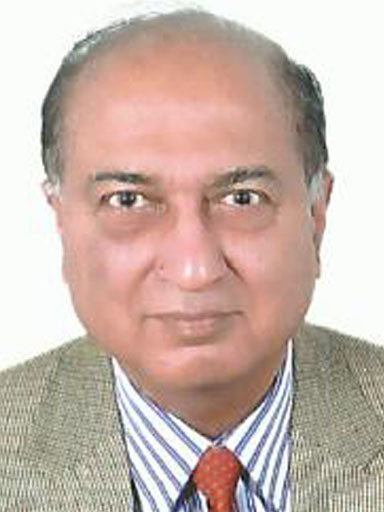By
Prime Minister Narendra Modi has often spoken about his desire to promote amity and cooperation throughout India’s South Asian neighbourhood, focusing considerable attention on the South Asian Association for Regional Cooperation (SAARC).
Heads of government of SAARC countries—Afghanistan, Pakistan, Nepal, Bhutan, Bangladesh, Sri Lanka and Maldives—were specially invited to the swearing in of the Narendra Modi government. Myanmar, a friendly Buddhist neighbour, with whom we share a 1640 km land border, was not invited, as it is not a member of SAARC. Mr. Modi is determined to try and use SAARC as a major forum for his plans for regional peace, stability and economic progress.
The 18th SAARC summit in Kathmandu in November 2014 must have been a stark revelation for Mr. Modi about the realities of SAARC. Like all past summits, the Kathmandu Summit was high on rhetoric, with precious little achieved by way of concrete results, on any key issue. The Summit Declaration spoke of the determination of leaders to expanding economic integration and promoting economic development through a South Asian Development Fund. It also spoke about increasing cooperation in areas ranging from regional connectivity, energy, health, education, youth and migration, to culture, terrorism and telecommunications. The reality is somewhat different.
The 2003 SAARC Summit Declaration also held in Kathmandu had eloquently committed leaders to implement the Report of a Group of Eminent Persons that recommended that SAARC should progressively move from becoming a Free Trade Area and Customs Union to an Economic Union, by 2020. A Free Trade Agreement was negotiated with great difficulty and still awaits full implementation. Pakistan does not extend its provisions for trade with India. It is also averse to extend this free trade area, which is confined to goods only, to the services sector also. In contrast, in a relatively brief period, India has negotiated a Free Trade Agreement covering both goods and services with ASEAN. Trade in goods alone with ASEAN members is expected to reach $100 billion shortly, well over double our trade with SAARC neighbours.
The performance of SAARC is even worse in areas of connectivity and energy. Despite being committed to doing so, under the SAARC Free Trade Agreement, Pakistan deliberately denies India road connectivity for exports to Afghanistan, while permitting use of its road networks for Afghanistan’s exports to India. It denies grid connectivity for purchase of electricity from India, even though it is experiencing severe energy shortages. All this is happening at a time when Bangladesh has recognised the benefits that both Dhaka and Delhi derive from road and sea connectivity. Nepal’s energy potential, Bhutan’s growing energy cooperation with India and grid connectivity established between Bangladesh and neighbouring Indian states like West Bengal and Tripura have set the stage for an eastern energy grid. This can become a South Asian grid, if Pakistan so chooses. It is unlikely to do so.
In the absence of offering anything positive, Pakistan uses SAARC gatherings only to score propaganda points. It knows that China is not located in South Asia. But it diverts attention from serious efforts to promote regional cooperation in South Asia, by wasting the time and energy of SAARC leaders, insisting that it’s “all weather friend” China should be made a full member of SAARC. The next SAARC Summit is to be held in Islamabad. India should expect a continuation of such antics by Pakistan.
India needs to seriously reconsider its policies on the role of SAARC. The present focus on SAARC has to necessarily shift to our eastern land and maritime borders. The Regional Forum that now needs to be activated is BIMSTEC, which brings together the littoral and landlocked states of the Bay of Bengal—India, Nepal, Bhutan, Bangladesh, Sri Lanka, Myanmar and Thailand. Connectivity with Afghanistan can soon be enhanced, bypassing Pakistan, through the Iranian port of Chah Bahar.
The writer is a former Indian diplomat. This article has been originally published in the New Indian Express on June 20.


